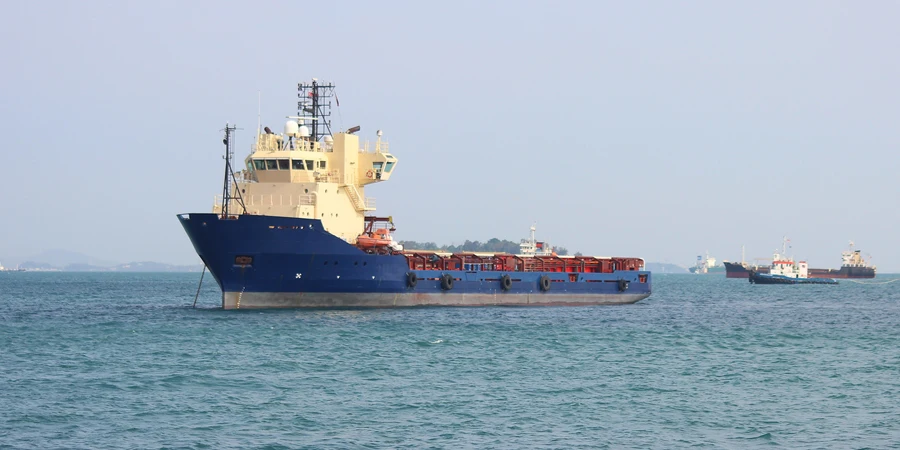Fortescue, with the support of the Maritime and Port Authority of Singapore (MPA), government agencies, research institutes, and industry partners, has successfully conducted the world’s first use of ammonia, in combination with diesel in the combustion process, as a marine fuel onboard the Singapore-flagged ammonia-powered vessel, the Fortescue Green Pioneer, in the Port of Singapore.

The Fortescue Green Pioneer was loaded with liquid ammonia from the existing ammonia facility at Vopak Banyan Terminal on Jurong Island for the fuel trial. In completing the fuel trial, the Fortescue Green Pioneer has also received flag approval from the Singapore Registry of Ships (SRS) and the “Gas Fueled Ammonia” notation by classification society DNV to use ammonia, in combination with diesel, as a marine fuel.
As a carrier for hydrogen, ammonia can be transported to demand centers for power generation and as a marine fuel in support of the energy transition. Several dual-fueled ammonia vessels have been ordered by shipowners.
The Fortescue Green Pioneer started its journey towards becoming the world’s first ocean-going ammonia-powered vessel in 2022 when Fortescue successfully converted a four-stroke engine to run on ammonia, in combination with diesel, at its land-based testing facility in Perth, Western Australia. (Earlier post.)
Following the success of the land-based testing, conversion work commenced on the vessel at Seatrium’s Benoi yard from July 2023. This included the installation of the gas fuel delivery system, safety systems and infrastructure, and the successful conversion of two of the vessel’s four engines to enable the use of ammonia, combined with diesel in the combustion process, to power the vessel. The two remaining engines onboard the Fortescue Green Pioneer will operate on conventional fuels when required.
In preparation for the vessel’s operations in Singapore, Hazard Identification Study and Hazard and Operability Study workshops were jointly organized by MPA, Fortescue, Vopak, research institutes, and industry partners to identify the potential risks during fuel transfer and engine trials and to develop the necessary prevention, control, and mitigation measures.
An ammonia plume model was jointly developed by the Agency for Science, Technology and Research’s Institute of High Performance Computing (A*STAR’s IHPC), Nanyang Technological University’s Maritime Energy and Sustainable Development Centre of Excellence (MESD), the Technology Centre for Offshore and Marine, Singapore (TCOMS), and the National University of Singapore’s Tropical Marine Science Institute (TMSI) to determine the safety envelope, model the dispersion of an ammonia plume in an event of an incident, and to support the safety and incident response planning.
The model, which accounted for the Fortescue Green Pioneer’s vessel and engine design parameters, behavior of ammonia within Singapore’s tropical climate, sea current conditions, and surrounding vessels, infrastructure, and geometries, was used to guide the operations. It will be continually enhanced as operations for new maritime fuels scale up in the Port of Singapore.
An Emergency Operations Center was also set up at MPA’s Port Operations Control Centre for representatives of MPA, Fortescue, Vopak, research institutes, and government agencies to monitor the operations, which was supported by a drone-enabled live stream operated by Skyports Drone Services.
The fuel trial was conducted over a period of seven weeks and included testing of the Fortescue Green Pioneer’s ammonia storage systems, associated piping, gas fuel delivery system, retrofitted engines, and seaworthiness. The tests were conducted in phases to ensure safe port operations and safety for crew members and engineers who have completed a series of rigorous training sessions since October 2023. As part of the safety protocols for the conduct of these tests, crew members also donned personal protection equipment such as chemical protection suits, nitrile chemical gloves, rubber boots, positive pressure mask and hood, and portable gas detectors for the relevant operations.
The two four-stroke retrofitted engines served as proxy for the commercialization of ammonia-fueled marine engines under development globally. The post-combustion nitrogen oxide (NOx) levels met the local air quality standard, while efforts to reduce the pilot fuel for combustion ignition and nitrous oxide (N2O) emissions post-combustion will continue as more ammonia-fueled marine engines and low-carbon ammonia sources become available.
The five cubic meters (three tonnes) of liquid ammonia used for the fuel trial was supplied by Vopak using its existing infrastructure at the 10,000 m3 Vopak Banyan Terminal on Jurong Island. As part of the risk management, extensive pre-operations, safety checks and tests were conducted. A second tranche of three tonnes of liquid ammonia will be loaded for the Fortescue Green Pioneer to conduct further tests and trials over the next few weeks.
The ammonia fuel loading, a first for Vopak globally using its existing infrastructure in Singapore, reaffirms the potential for using existing and similar ammonia infrastructure cost-effectively by terminals globally to support the operationalisation, commercialisation and progressive scale-up of ammonia as a marine fuel for international shipping.
Source from Green Car Congress
Disclaimer: The information set forth above is provided by greencarcongress.com independently of Alibaba.com. Alibaba.com makes no representation and warranties as to the quality and reliability of the seller and products.




